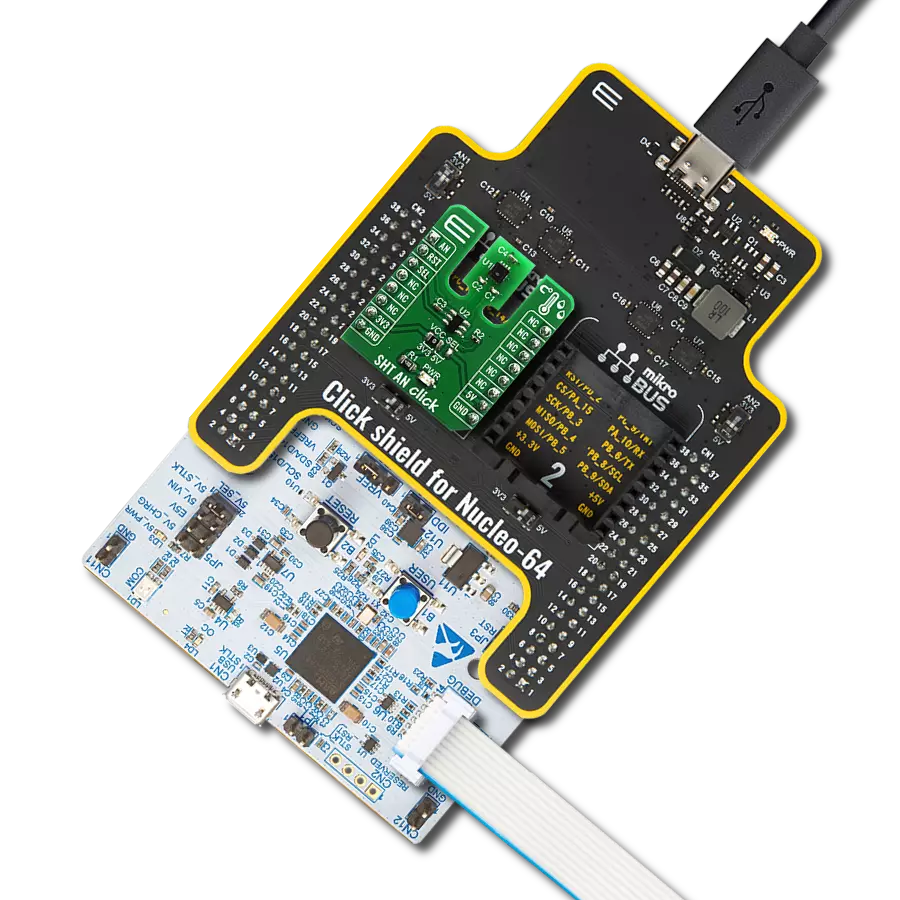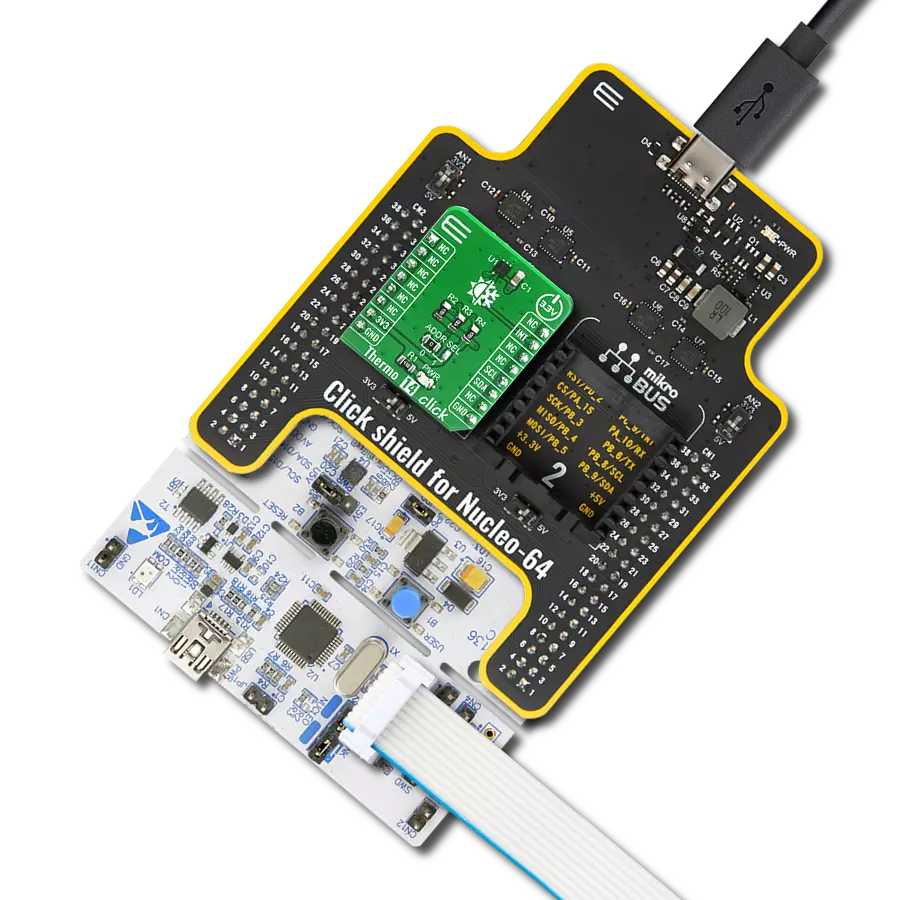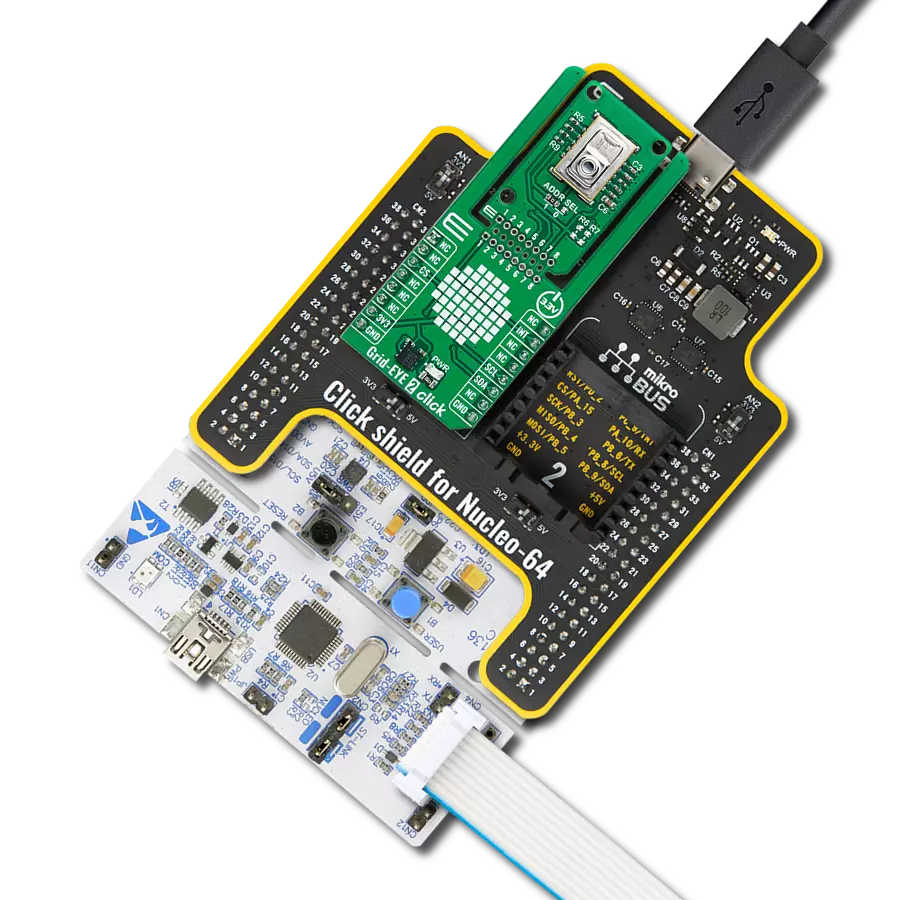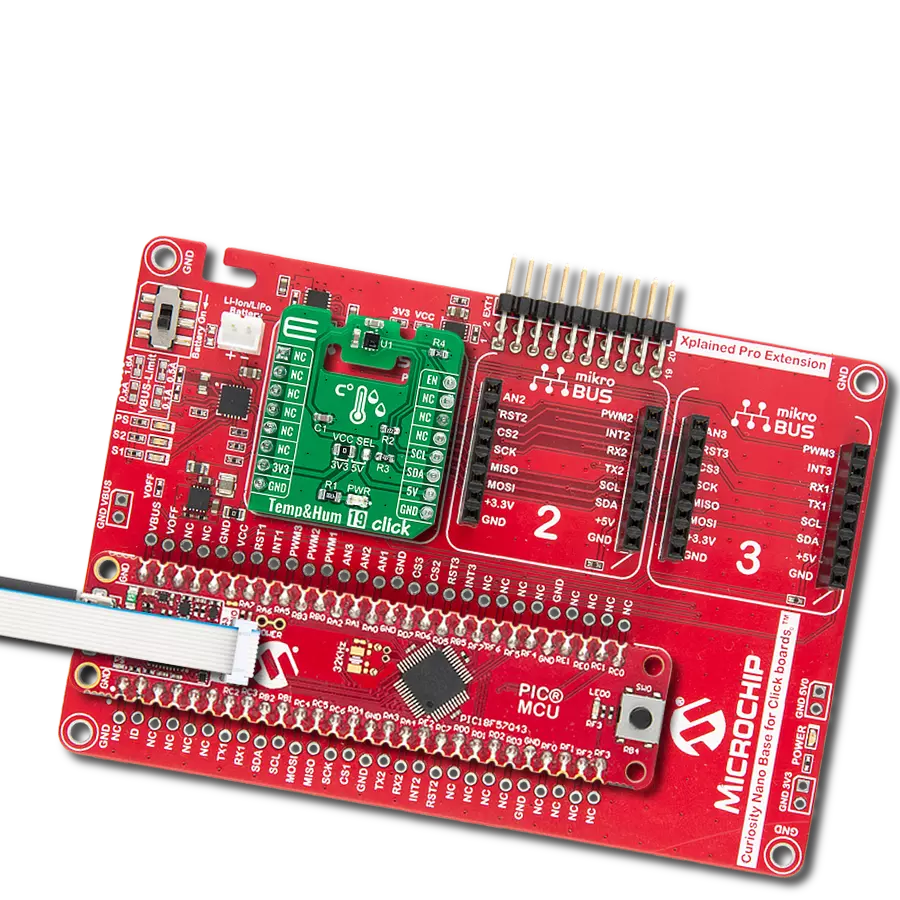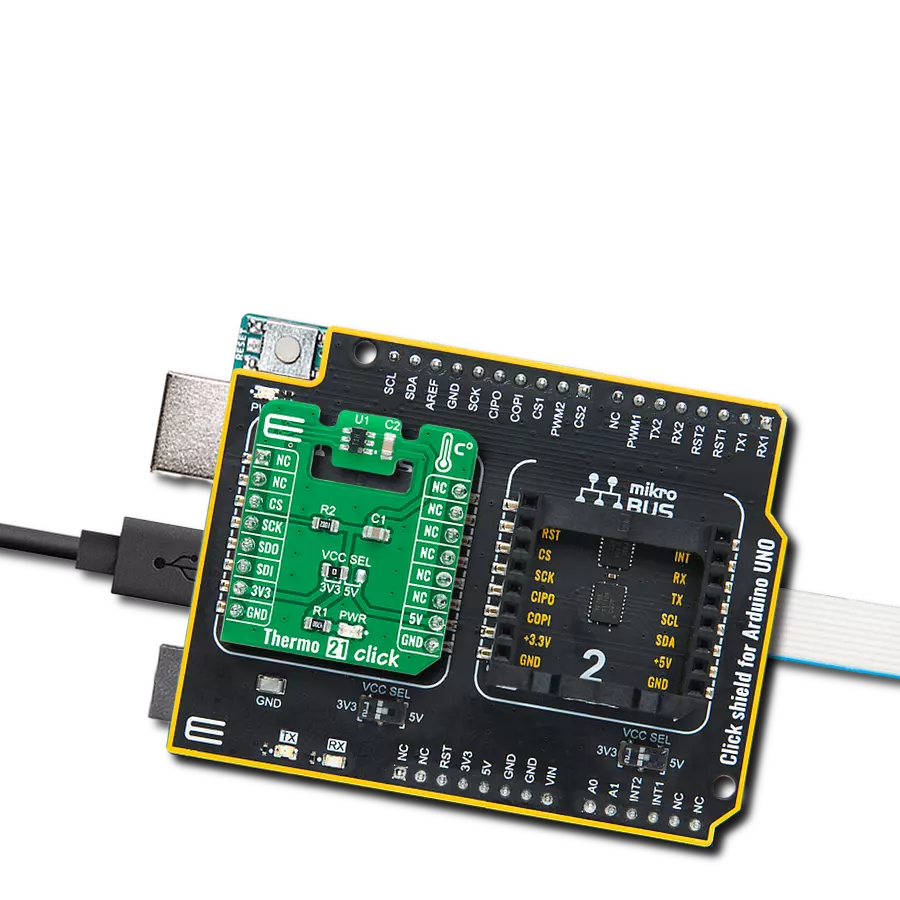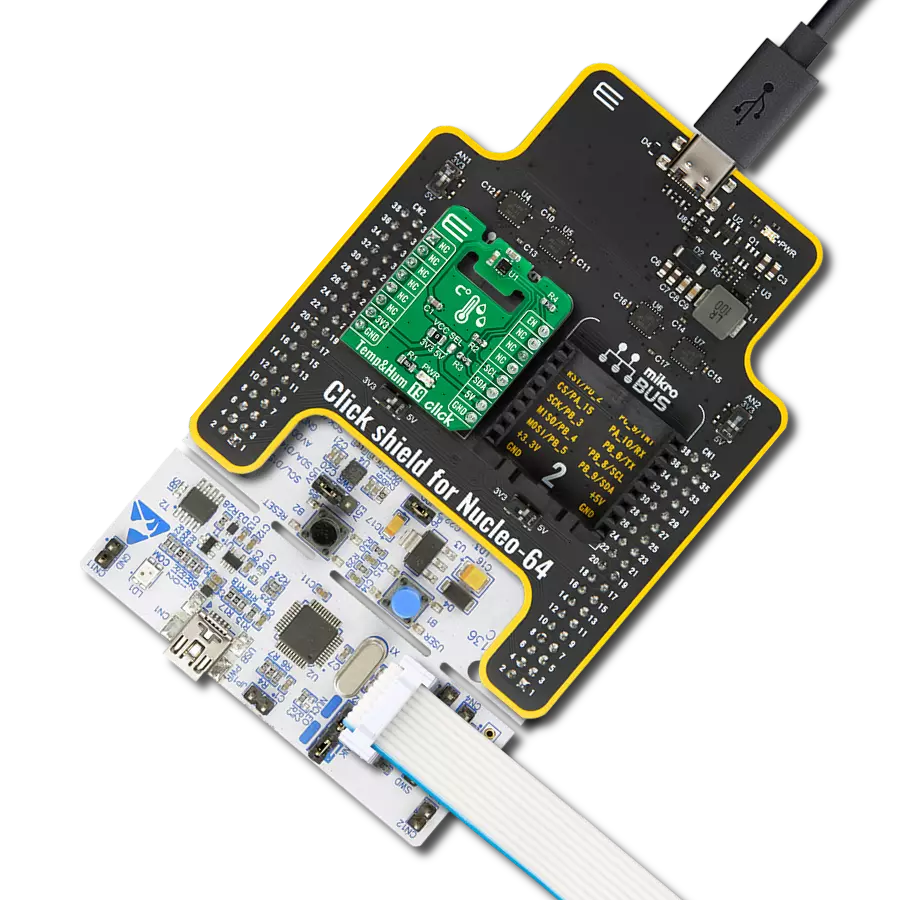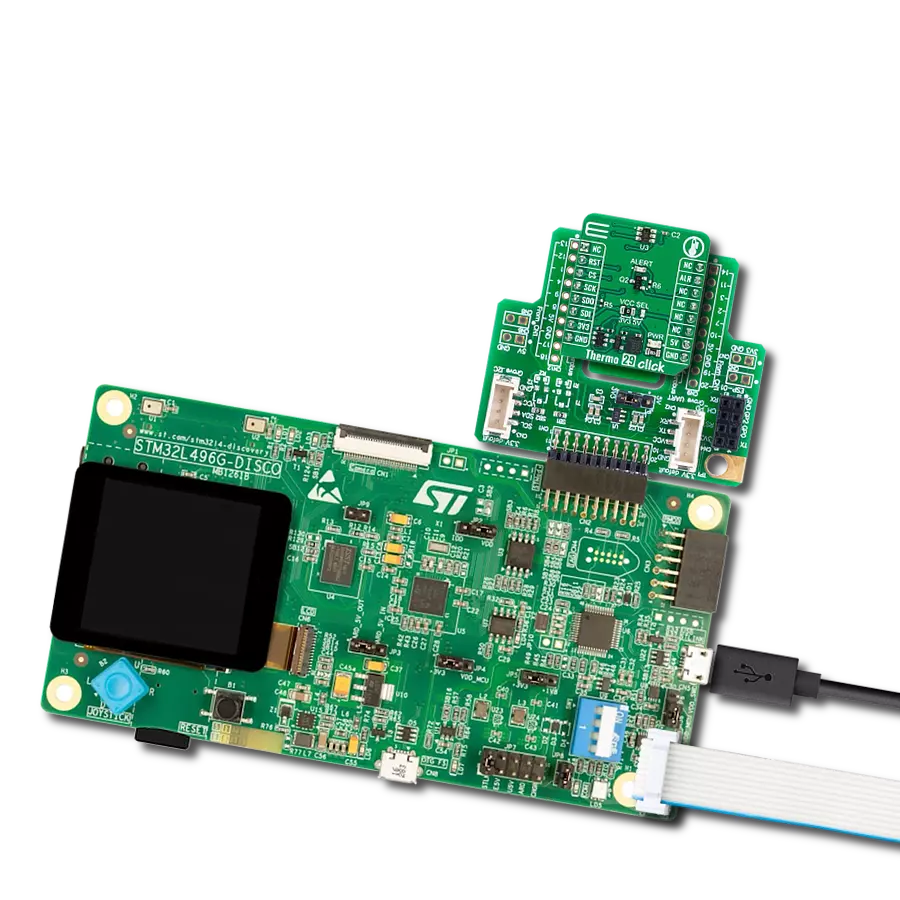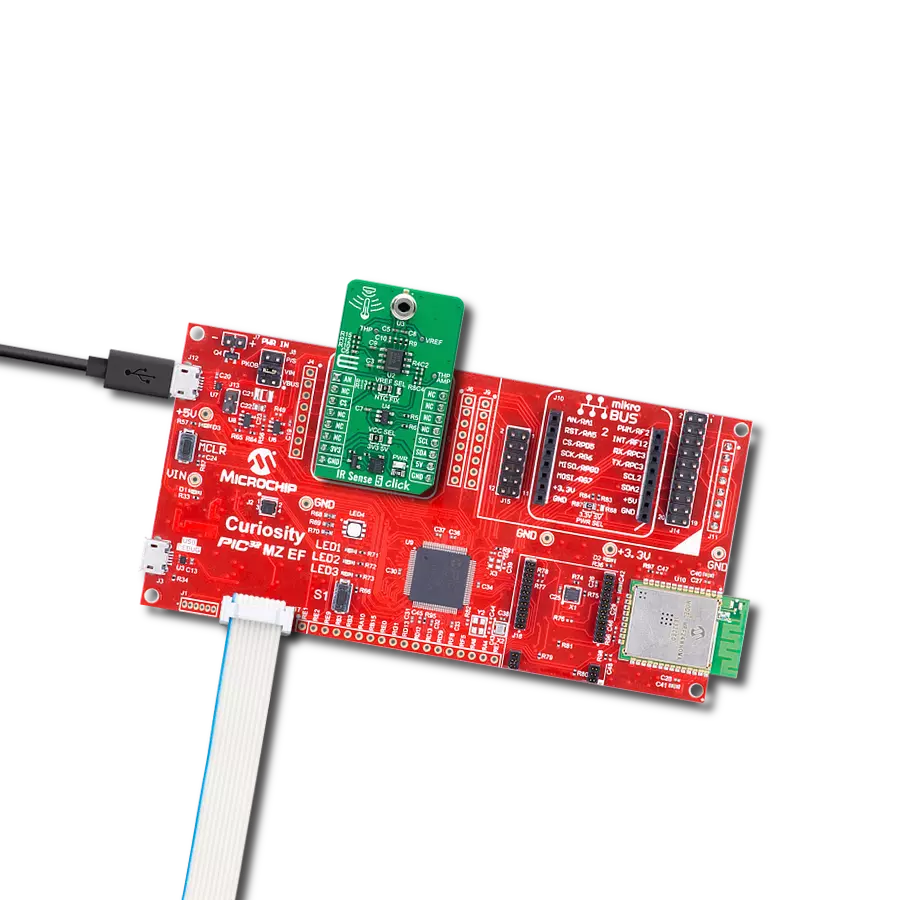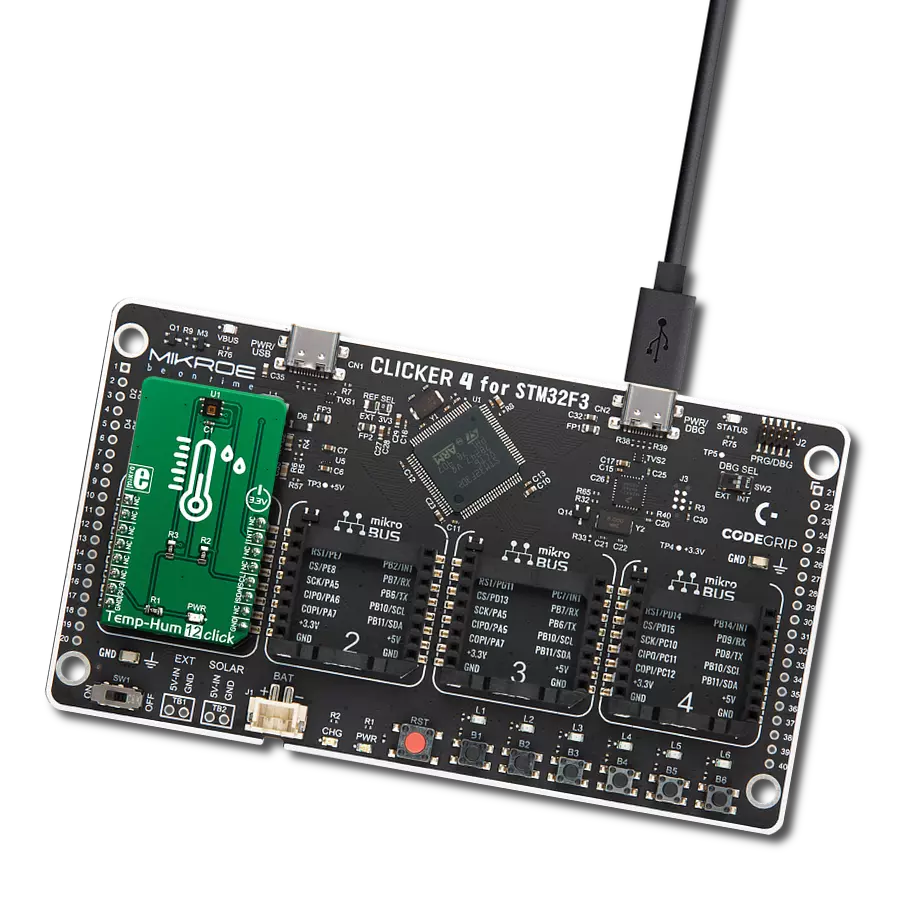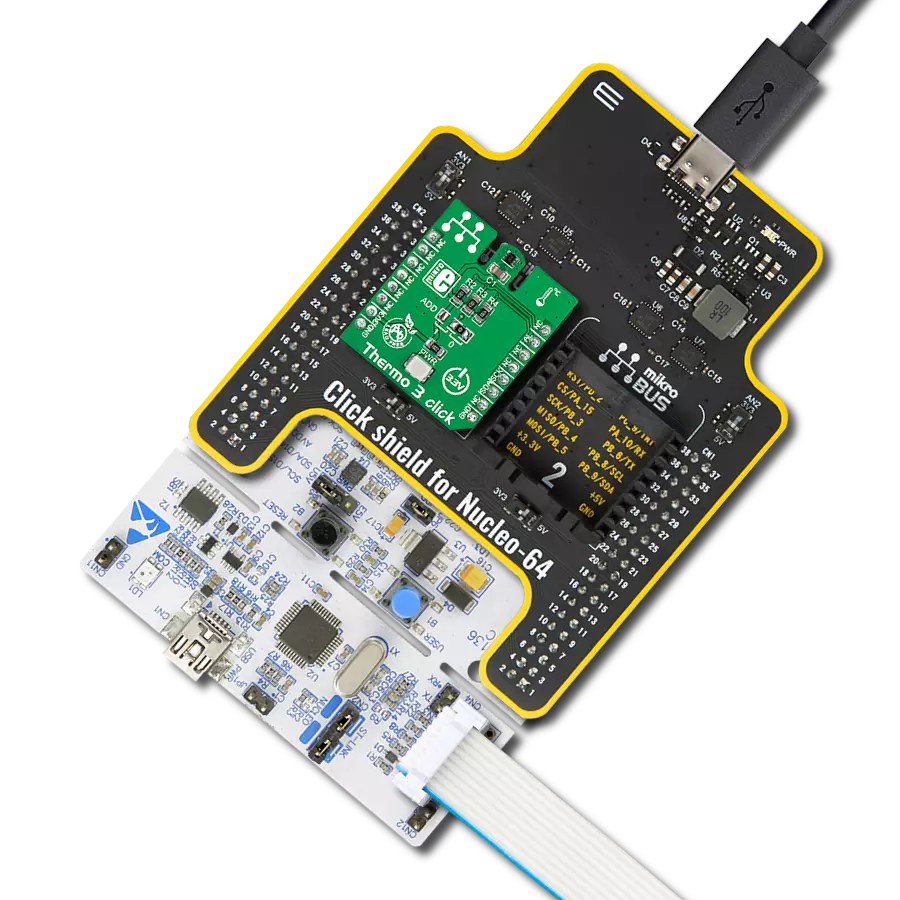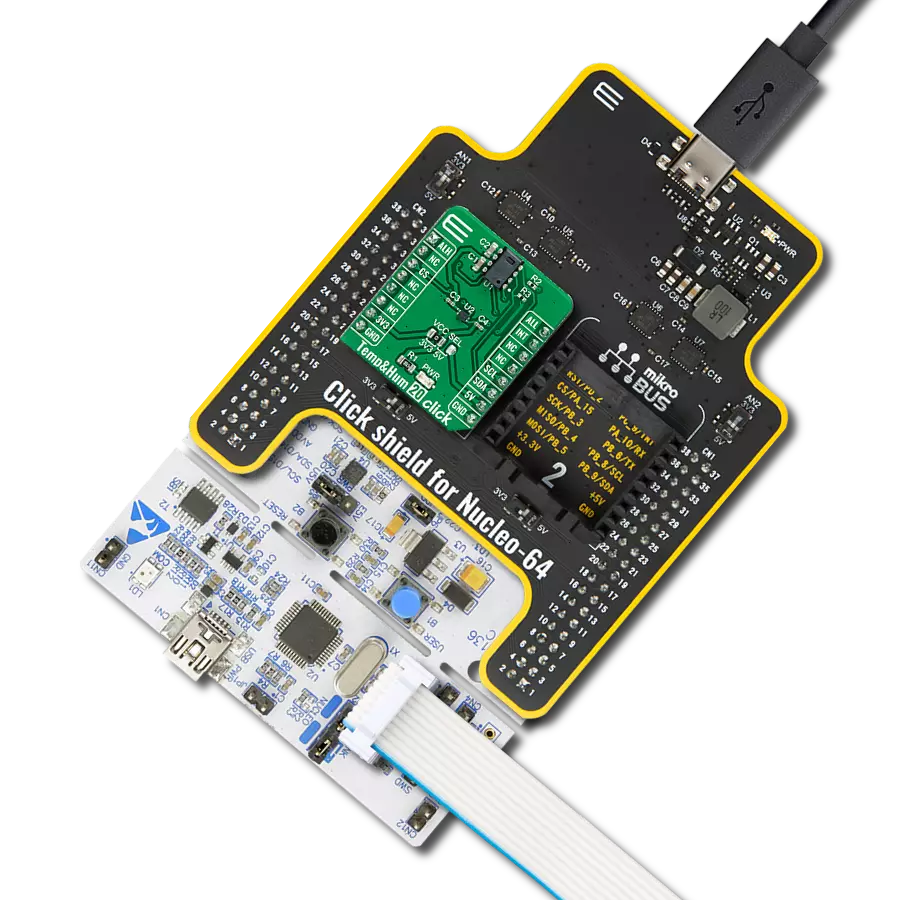Improve your comfort and well-being with our temperature and humidity sensing solution, enabling you to create environments that promote productivity, health, and overall satisfaction
A
A
Hardware Overview
How does it work?
HDC1000 Click is based on the HDC1000, a digital humidity sensor with an integrated temperature sensor from Texas Instruments, providing long-term and excellent measurement accuracy at low power. The HDC1000 is a factory-calibrated sensor that measures humidity using a novel capacitive sensor. The sensing element of the HDC1000 is placed on the bottom part of the device, which makes it more robust against dirt, dust, and other environmental contaminants. It can read humidity over the full range of 0 to 100% RH with a typical accuracy of ±3% over 20% to 60% RH, while its maximum temperature range is from -40 to 125°C. It has a typical accuracy of ±0.2°C over 10 to 50°C. The HDC1000 communicates with MCU using the
standard I2C 2-Wire interface with a maximum frequency of 400kHz. Resolution is based on the measurement time and can be 8, 11, or 14 bits for humidity; 11 or 14 for temperature. Besides, the HDC1000 allows choosing the least significant bits (LSB) of its I2C slave address using the SMD jumpers labeled ADRs. This sensor has two modes of operation: Sleep mode and Measurement mode. After the Power-Up sequence, the HDC1000 is in sleep mode, where it waits for I2C interface input, including commands to configure the conversion times, read the status of the battery, trigger a measurement, and read measurements. Once it receives a command to initiate a measurement, the HDC1000 moves from Sleep
mode to Measurement mode. In Measurement mode, the HDC1000 acquires the configured measurements and sets the RDY line, routed to the INT pin of the mikroBUS™ socket, to a low logic state, indicating that the measurement process is complete. This Click board™ can be operated only with a 3.3V logic voltage level. The board must perform appropriate logic voltage level conversion before using MCUs with different logic levels. However, the Click board™ comes equipped with a library containing functions and an example code that can be used as a reference for further development.
Features overview
Development board
PIC32MZ Clicker is a compact starter development board that brings the flexibility of add-on Click boards™ to your favorite microcontroller, making it a perfect starter kit for implementing your ideas. It comes with an onboard 32-bit PIC32MZ microcontroller with FPU from Microchip, a USB connector, LED indicators, buttons, a mikroProg connector, and a header for interfacing with external electronics. Thanks to its compact design with clear and easy-recognizable silkscreen markings, it provides a fluid and immersive working experience, allowing access anywhere and under
any circumstances. Each part of the PIC32MZ Clicker development kit contains the components necessary for the most efficient operation of the same board. In addition to the possibility of choosing the PIC32MZ Clicker programming method, using USB HID mikroBootloader, or through an external mikroProg connector for PIC, dsPIC, or PIC32 programmer, the Clicker board also includes a clean and regulated power supply module for the development kit. The USB Micro-B connection can provide up to 500mA of current, which is more than enough to operate all onboard
and additional modules. All communication methods that mikroBUS™ itself supports are on this board, including the well-established mikroBUS™ socket, reset button, and several buttons and LED indicators. PIC32MZ Clicker is an integral part of the Mikroe ecosystem, allowing you to create a new application in minutes. Natively supported by Mikroe software tools, it covers many aspects of prototyping thanks to a considerable number of different Click boards™ (over a thousand boards), the number of which is growing every day.
Microcontroller Overview
MCU Card / MCU
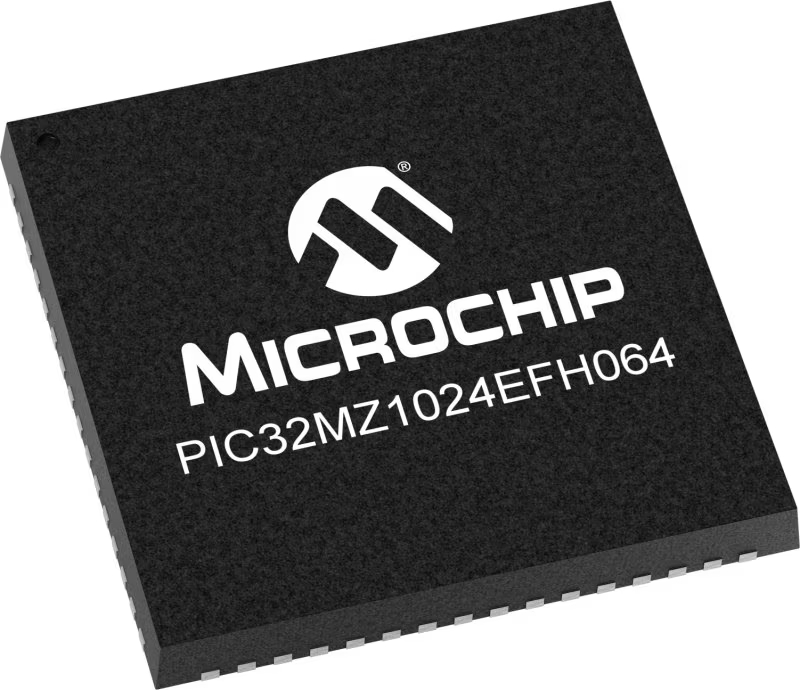
Architecture
PIC32
MCU Memory (KB)
1024
Silicon Vendor
Microchip
Pin count
64
RAM (Bytes)
524288
Used MCU Pins
mikroBUS™ mapper
Take a closer look
Click board™ Schematic

Step by step
Project assembly
Track your results in real time
Application Output
1. Application Output - In Debug mode, the 'Application Output' window enables real-time data monitoring, offering direct insight into execution results. Ensure proper data display by configuring the environment correctly using the provided tutorial.

2. UART Terminal - Use the UART Terminal to monitor data transmission via a USB to UART converter, allowing direct communication between the Click board™ and your development system. Configure the baud rate and other serial settings according to your project's requirements to ensure proper functionality. For step-by-step setup instructions, refer to the provided tutorial.

3. Plot Output - The Plot feature offers a powerful way to visualize real-time sensor data, enabling trend analysis, debugging, and comparison of multiple data points. To set it up correctly, follow the provided tutorial, which includes a step-by-step example of using the Plot feature to display Click board™ readings. To use the Plot feature in your code, use the function: plot(*insert_graph_name*, variable_name);. This is a general format, and it is up to the user to replace 'insert_graph_name' with the actual graph name and 'variable_name' with the parameter to be displayed.

Software Support
Library Description
This library contains API for HDC1000 Click driver.
Key functions:
hdc1000_default_cfg- This function executes default configuration for HDC1000 Clickhdc1000_get_temperature_data- This function gets temperature data from the HDC1000 sensorhdc1000_get_humidity_data- This function gets humidity data from the HDC1000 sensor
Open Source
Code example
The complete application code and a ready-to-use project are available through the NECTO Studio Package Manager for direct installation in the NECTO Studio. The application code can also be found on the MIKROE GitHub account.
/*!
* \file
* \brief HDC1000 Click example
*
* # Description
* Demo application code is used for measuring temperature and humidity.
*
* The demo application is composed of two sections :
*
* ## Application Init
* AppInit is used for Logger and Click initialization.
*
* ## Application Task
* This is an example which demonstrates the usage of HDC1000 Click board.
* HDC1000 measure temperature and humidity, and calculate dewpoint value from the HDC1000 sensor.
*
* \author Mihajlo Djordevic
*
*/
// ------------------------------------------------------------------- INCLUDES
#include "board.h"
#include "log.h"
#include "hdc1000.h"
// ------------------------------------------------------------------ VARIABLES
static hdc1000_t hdc1000;
static log_t logger;
// ------------------------------------------------------ APPLICATION FUNCTIONS
void application_init ( void )
{
log_cfg_t log_cfg;
hdc1000_cfg_t cfg;
/**
* Logger initialization.
* Default baud rate: 115200
* Default log level: LOG_LEVEL_DEBUG
* @note If USB_UART_RX and USB_UART_TX
* are defined as HAL_PIN_NC, you will
* need to define them manually for log to work.
* See @b LOG_MAP_USB_UART macro definition for detailed explanation.
*/
LOG_MAP_USB_UART( log_cfg );
log_init( &logger, &log_cfg );
log_info( &logger, "---- Application Init ----" );
// Click initialization.
hdc1000_cfg_setup( &cfg );
HDC1000_MAP_MIKROBUS( cfg, MIKROBUS_1 );
hdc1000_init( &hdc1000, &cfg );
log_printf( &logger, "-- Configurating --\r\n" );
hdc1000_default_cfg( &hdc1000 );
Delay_ms ( 100 );
log_printf( &logger, "-- Start measurement --\r\n" );
log_printf( &logger, "-----------------------\r\n" );
}
void application_task ( void )
{
float humidity;
float temperature;
temperature = hdc1000_get_temperature_data( &hdc1000 );
log_printf( &logger, " Temperature : %0.2f degC\r\n", temperature );
humidity = hdc1000_get_humidity_data( &hdc1000 );
log_printf( &logger, " Humidity : %0.2f %%\r\n", humidity );
log_printf( &logger, "-----------------------\r\n" );
Delay_ms ( 1000 );
}
int main ( void )
{
/* Do not remove this line or clock might not be set correctly. */
#ifdef PREINIT_SUPPORTED
preinit();
#endif
application_init( );
for ( ; ; )
{
application_task( );
}
return 0;
}
// ------------------------------------------------------------------------ END
Additional Support
Resources
Category:Temperature & humidity

















